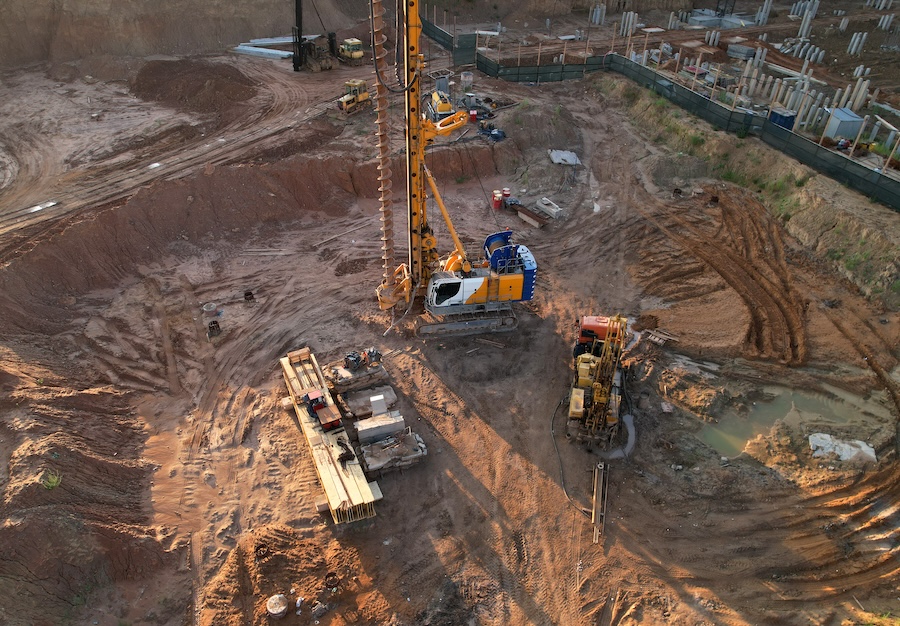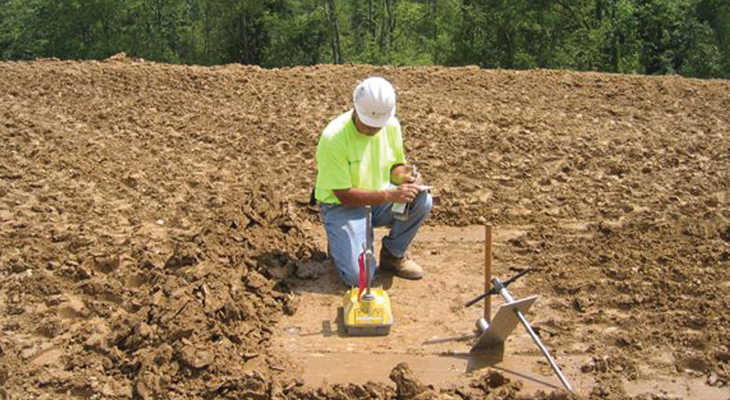The Interdisciplinary Approaches in the Geotechnical Industry: Connecting the Gap In Between Design, Geology, and Environmental Scientific Research for Optimal Task Outcomes
The combination of design, geology, and ecological scientific research within the geotechnical industry is not simply advantageous; it is imperative for achieving optimum job outcomes. This interdisciplinary partnership fosters a comprehensive understanding of complex site problems, enabling cutting-edge services to arise. By analyzing essential functions and successful situation studies, we can reveal the vibrant interaction that drives job success. Challenges remain in efficiently taking care of these multidisciplinary initiatives, elevating concerns concerning future patterns and possible developments. What approaches might arise to facilitate this crucial partnership and enhance the efficiency of geotechnical methods?
Significance of Interdisciplinary Collaboration
The significance of interdisciplinary cooperation in the geotechnical sector can not be overstated. Reliable geotechnical jobs need the integration of diverse experience from different fields, including engineering, geology, and ecological scientific research. This collaboration guarantees that all elements of a project are considered, leading to comprehensive services that resolve complex obstacles.
When functioning in isolation,Interdisciplinary collaboration cultivates development by making it possible for specialists to share insights and methods that might not be obvious. By leveraging the staminas of multiple disciplines, teams can determine possible dangers, enhance style procedures, and boost the sustainability of geotechnical tasks. Such partnership promotes a holistic understanding of site-specific problems, which is essential for precise evaluation and decision-making.
The complexity of geotechnical projects necessitates a worked with approach to analytical. Inevitably, interdisciplinary collaboration is important for progressing best techniques and accomplishing excellence in the geotechnical market.
Key Roles of Each Self-control
Collaboration amongst numerous techniques is not simply valuable; it is vital for the successful execution of geotechnical projects. Each discipline-- engineering, geology, and environmental science-- plays an unique yet interconnected duty that adds to forecast effectiveness and sustainability.
Geotechnical designers are largely in charge of making structures and guaranteeing structural honesty. They assess dirt and rock buildings to examine load-bearing abilities, giving vital data for secure building and construction practices. Their expertise allows the solution of innovative solutions to intricate challenges.

Ecological researchers evaluate the prospective influences of building on ecological communities and water resources. They conduct environmental analyses and create mitigation techniques to decrease adverse impacts. By integrating environmental considerations, they make certain compliance with guidelines and advertise sustainability throughout the task lifecycle.
Study of Effective Combination
Effective assimilation of geotechnical disciplines can be exemplified with numerous study that highlight the efficiency of team effort in dealing with intricate engineering challenges. One remarkable example is the building of the Hong Kong-- Zhuhai-- Macau Bridge, where a collective approach involving geotechnical engineering, geology, and environmental science was critical. Designers and rock hounds worked in unison to examine the seabed problems and maximize the structure design, guaranteeing stability and decreasing ecological impact.
Another impactful situation is the improvement of slope security in the San Francisco Bay Location, where an interdisciplinary team incorporated geotechnical evaluation with ecological evaluations. By incorporating hydrological studies and geological studies, the group properly identified potential landslide dangers and carried out efficient mitigation measures, enhancing safety and security and sustainability.
Moreover, the redevelopment of Brownfield sites usually calls for a multidisciplinary method. In one situation in Chicago, cooperation among geotechnical designers, environmental researchers, and city coordinators caused the successful remediation of polluted dirt, permitting for the safe makeover of the website right into an area park. These situation research studies highlight that interdisciplinary collaboration not just addresses technological difficulties however additionally promotes ingenious solutions that benefit both areas and jobs.
Challenges in Multidisciplinary Projects

In addition, working with routines and process amongst various groups can be bothersome, specifically when each important site discipline has distinct project milestones and deliverables. This imbalance can result in delays and enhanced prices. The difficulty of resource allowance likewise looms large; making sure that specialized expertise is readily available at crucial junctures needs careful planning and insight.
Last but not least, regulative compliance poses an additional considerable obstacle. Each technique might deal with various regulatory structures, and lining up these demands to satisfy project purposes can be complicated and lengthy. Dealing with these obstacles necessitates strong management and effective communication techniques to promote collaboration and ensure that multidisciplinary groups work cohesively in the direction of shared objectives.
Future Trends in Geotechnical Practices
As the geotechnical industry advances, arising patterns are improving methods to deal with the obstacles faced in multidisciplinary jobs - engineer of record. One significant pattern is the raised combination of advanced modern technologies, such as expert system and equipment learning, into geotechnical evaluation and design. These innovations improve predictive modeling and threat evaluation, allowing designers to make more informed decisions throughout the project lifecycle

In addition, the fostering of electronic twins and real-time surveillance systems is ending up being extra prevalent. These tools help with recurring analysis of soil problems and architectural performance, allowing for prompt treatments when issues occur.
Verdict
To conclude, the combination of engineering, geology, and ecological science is essential for accomplishing optimal end results in the geotechnical market. Interdisciplinary partnership fosters innovation, boosts analytic abilities, and lines up technical requirements with ecological sustainability. Successful study highlight the benefits of this method, while recognizing the challenges dealt with in multidisciplinary projects. Looking ahead, embracing these joint methods will be vital for navigating future patterns and advancing the area of geotechnical engineering.
The assimilation of engineering, geology, and ecological scientific research within the geotechnical industry is not merely advantageous; it is imperative for attaining optimum task end results. Reliable geotechnical tasks require the assimilation of diverse expertise from different areas, consisting of engineering, geology, and environmental scientific research.Browsing the complexities of multidisciplinary jobs in the geotechnical visit this website sector offers several significant challenges.As the geotechnical industry evolves, arising fads are improving practices to resolve the obstacles faced in multidisciplinary tasks. Geotechnical designers are increasingly working together with environmental scientists to make sure that jobs align with sustainability goals and conform with regulatory needs.